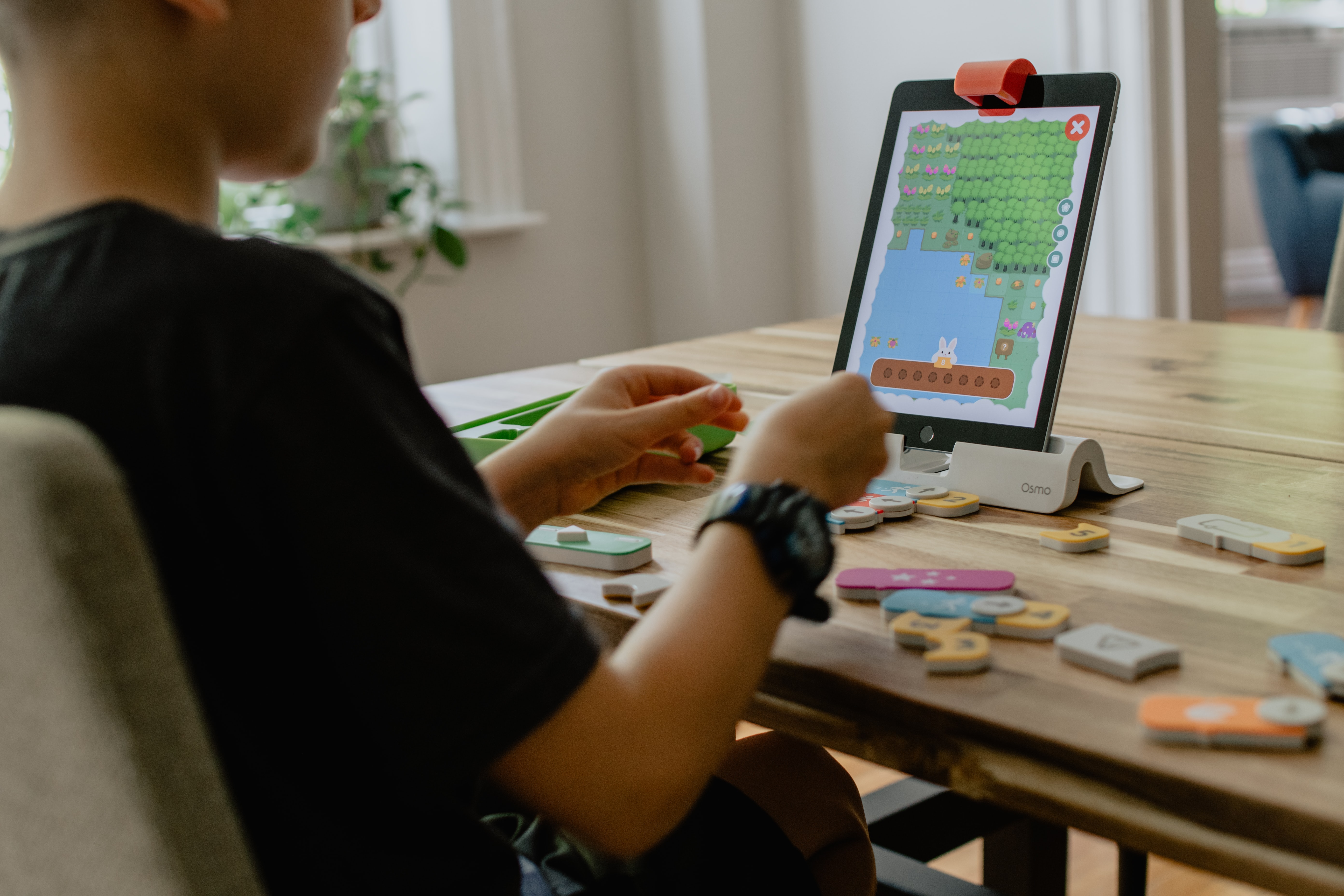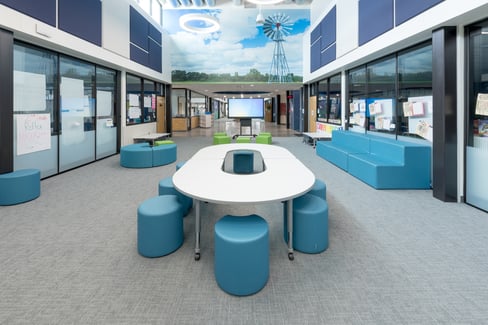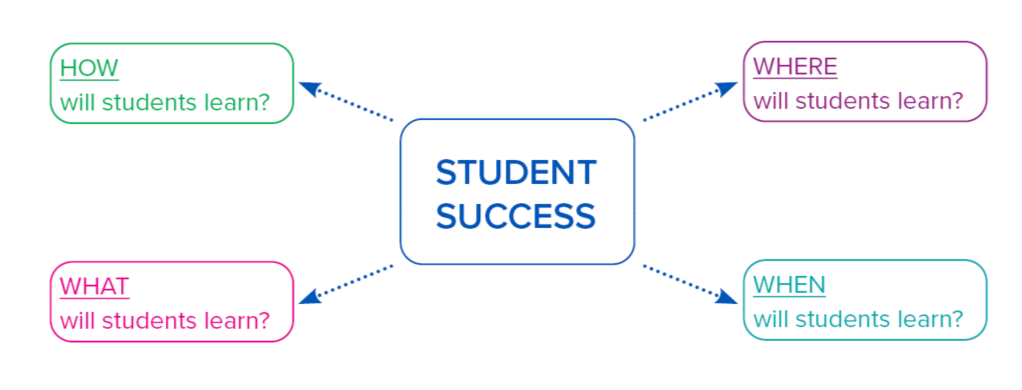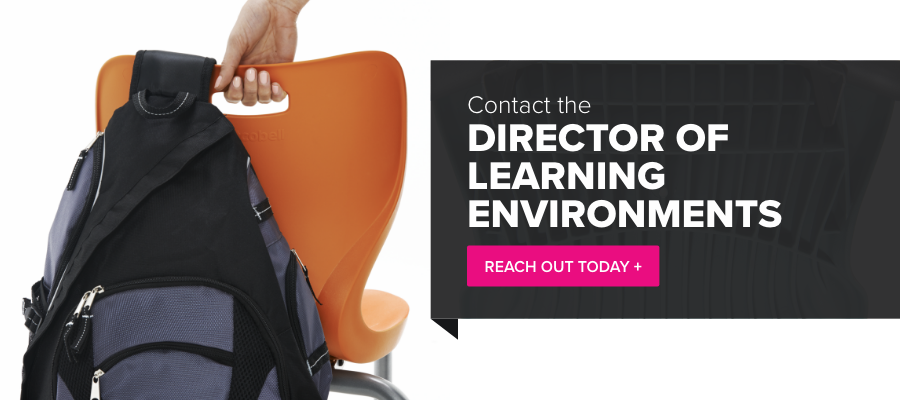Transform the Learning Environment, Transform Learning!
The disruption of COVID-19 has had an unprecedented impact on learning environments. The 2020 pandemic shook up the educational system, forcing schools to reimagine the way we educate students and how we prepare them for success now, as well as into the future.
Whether we like it or not, this historic event shone a spotlight on the disparities in teaching and learning across the country. It opened the door for us, as educators, to rethink practices, policies, principles and even place—remote vs in-person instruction. It gave us a unique opportunity to control our future and connect the dots between what we teach, how we teach, where we teach, and align it to our vision of student success.
As we reimagine learning with these opportunities in mind, let’s dive into how and why creating the right learning environment for your students can transform learning for the better!
Related Article: Connecting the Dots Between Student Success & Learning Spaces

The Power of a Learning Environment to Transform Learning
Can changing the space really change the outcome?
As an innovative school leader, Superintendent Michael Kuch from Wichita Falls ISD, is taking advantage of this time to embrace change and implement his school district’s bold vision for transformed learning. The district’s leadership team has embraced a unified vision:
- To better utilize the school’s space in order to transform the learning environment
- To transform learning and connect the community in transforming the ideology of student success.*
Kuch states the district’s vision for its new buildings and learning environments “need to retain relevance well into the future.” District leadership envisions learning spaces that are flexible and adaptable, taking into consideration that brick and mortar buildings may be obsolete in the future. Realizing that virtual learning is here to stay, the district is embracing a blended learning model for all of its core academic learning areas and is designing spaces to support transformed learning, while still enhancing programs—like fine arts and sports—to bring students back onto the campus.

Whether you are making this kind of ground-breaking learning transformation, or simply making a “collaborative conversion” to flexible classroom furnishings, here are 4 things to consider when planning for today and preparing for tomorrow’s learning environment.
Related Article: How the Right Learning Environments Can Impact Student Success
4 Things to Consider When Shaping Transformative Learning Environments
1. Define your “Why”
American author, Simon Sinek, encourages us to clearly define our “why” before making any transformation. This guiding principle or purpose provides us with the framework we need to shape our thinking and actions, allowing us to be more innovative, more successful, and inspire others. (Clearly, the team in Wichita Falls, Texas has defined their “why.”)
2. Remember that design matters
The design of the classroom has an immediate and lasting effect on students’ physical, psychological, physiological, and cognitive abilities. Color, comfort, space, movement, and flexibility can all impact student achievement (2017, Sheninger and Murray).

3. Know what you are buying
It goes without saying that if you’re investing in new school furniture, you want it to last. Finding the right fit takes time and work. Let your teachers and students kick the tires, gathering feedback on which school furniture products enhance teaching and eliminate barriers to successful learning.
Related Article: Transform Learning Spaces by Purchasing the Right School Furniture
4. Establish post-occupancy expectations and plans
Transformation isn’t a slam-dunk. It takes work! How will you get everyone on board to execute your classroom transformation? Providing professional learning for teachers, staff, and students on the functionality of new school furniture may sound silly, but is it? Your vision is to prepare your students for the future, and you will need all systems aligned to do just that.
In a recent interview, Director of Teaching and Learning for the Davis School District (Farmington, Utah), Belinda Kuck said initially, she was skeptical of professional learning for school furniture. She notes that the importance of setting expectations and training teachers before they inhabit a new space is critical in transforming learning. Her pro advice? Invest in professional learning for classroom furniture the same way you would invest in it for math or reading.
The fact is, the way learning environments are set up dramatically impacts student learning. It is important educators are equipped to use classroom furniture as yet another tool for their success.
Related Article: Transform Learning with Post-Occupancy Professional Learning
Learning Environments Influence Student Behavior
Where we learn, work, play, gather, rest, and socialize is all impacted by the place in which we do it. Physical environment influences our behavior, impacts our mood, and inspires us to engage. It can encourage and facilitate interactions and make us feel safe and secure. Transforming learning goes hand-in-hand with transforming the learning environment.
---
SOURCES:
- Sheninger, Eric, and Murry, Thomas. “Designing Learner-Centered Spaces”, THE Journal, July 2017, https://thejournal.com/articles/2017/07/05/designing-learner-centered-spaces.aspx. Accessed 9 Aug. 2019.
- *MORE Momentum: Wichita Falls | On-Demand Webinar
Recent Posts
In part one of our series on thoughtful classroom design, we heard an educator’s perspective on...
In part one of our series on thoughtful classroom design, we heard an educator’s perspective on...

